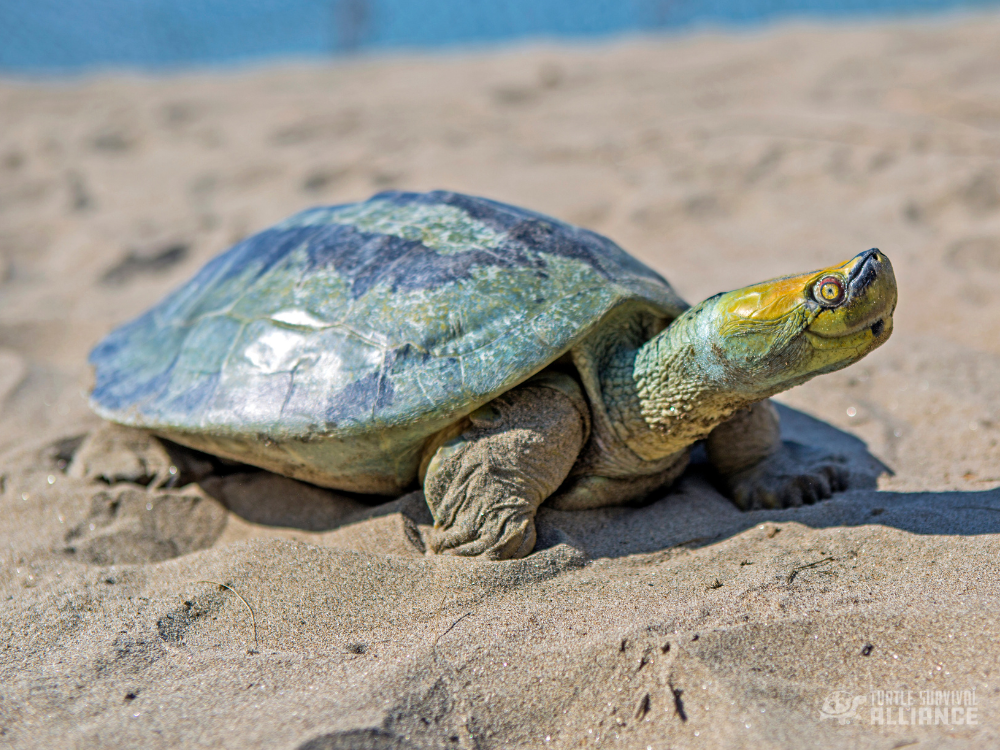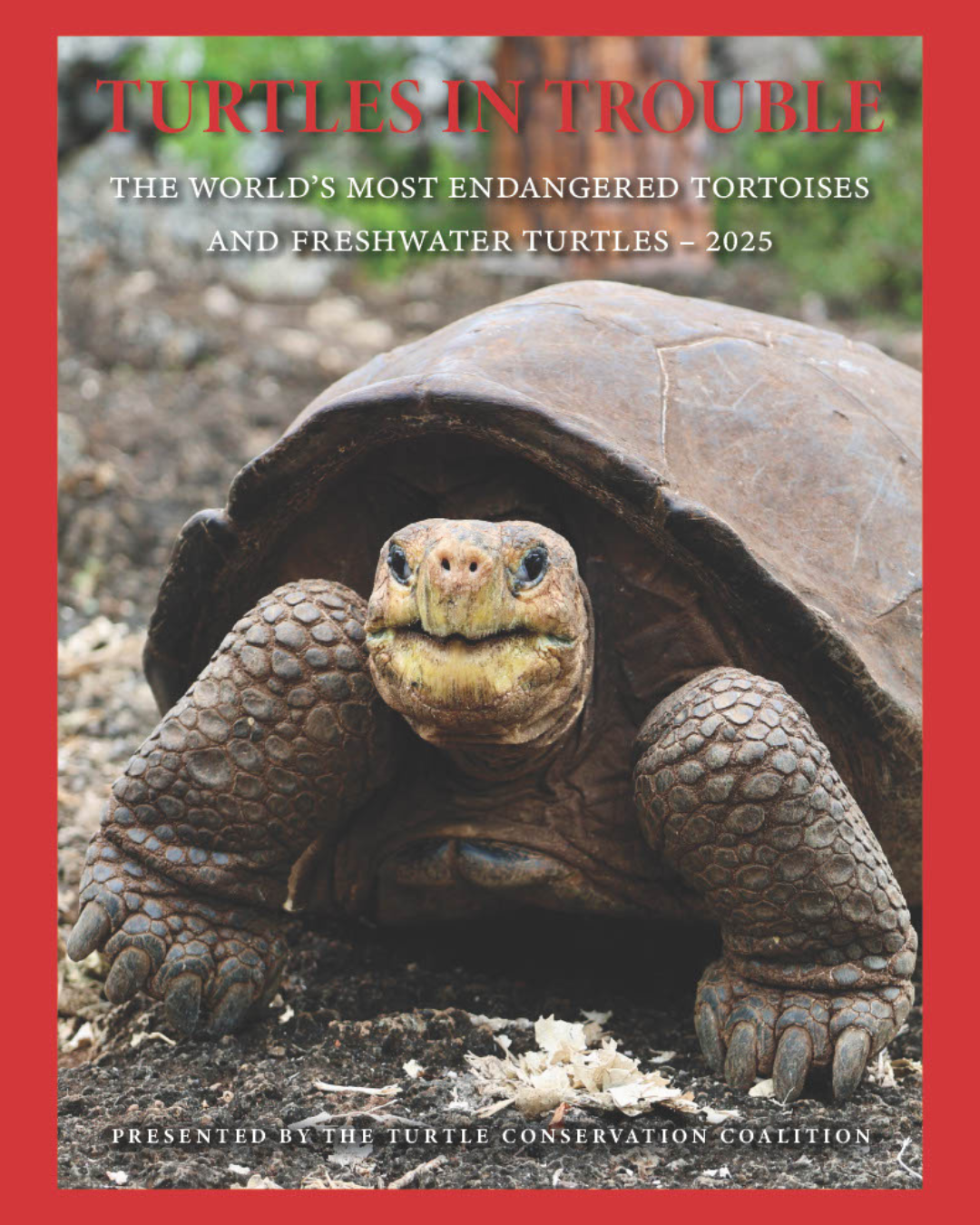For Immediate Release
New Report Sounds Alarm for the World’s Most Endangered Turtles and Tortoises
July 17, 2025
CONTACT: Jordan Gray, Turtle Survival Alliance, (912) 659-0978, jgray@turtlesurvival.org
- Over half of the world’s known modern-day tortoise and freshwater turtle species, totaling 201 out of 364, are currently threatened or extinct. Of these, 53.8% are classified as Vulnerable, Endangered, or Critically Endangered, making turtles one of the most imperiled vertebrate groups globally.
- Despite the crisis, notable conservation successes demonstrate that targeted, collaborative conservation can yield positive results.
- The Turtle Survival Alliance prioritizes science-driven, evidence-based conservation focusing on 150 priority species, currently impacting 43 of the 66 highlighted in the report, and calls for urgent global action.
North Charleston, South Carolina, United States of America – The Turtle Survival Alliance (TSA), in partnership with the Turtle Conservation Coalition, today announced the release of the 2025 edition of Turtles in Trouble: The World’s Most Endangered Tortoises and Freshwater Turtles, a comprehensive and urgent assessment of the planet’s most imperiled species.
Of the 364 species assessed, including both living and recently extinct species, 201 are either threatened or extinct. Among these, 196 species (53.8%) are classified as Vulnerable, Endangered, or Critically Endangered. With 359 species remaining today, this underscores that turtles and tortoises are among the most threatened groups of vertebrates on Earth.
“These extraordinary animals have outlasted dinosaurs and survived for over 200 million years, but they may not survive us,” said Marc Dupuis-Desormeaux, President and CEO of the Turtle Survival Alliance. “We have the knowledge, tools, and partnerships needed to stop this. What we need now is the global will to act decisively and urgently.”

Asia remains the epicenter of this extinction crisis, where turtle diversity is highest and the threats are most severe. High human population density, habitat destruction and loss, and illegal trade for pets, food, and traditional medicine are pushing many Asian species toward extinction. Nearly half of the 66 most endangered species highlighted in the report come from Asia, including several from the highly threatened Cuora (Asian box turtles) and Batagur (Asian river turtles) genera. But the threat is global: turtles are disappearing from rivers, forests, and wetlands across six continents, from Madagascar and the Galápagos to Mexico and the United States.
Still, the report offers hope. The Burmese Star Tortoise, once considered ecologically extinct, is now thriving in assurance colonies in Myanmar, with thousands of individuals reintroduced into the wild and breeding successfully. In Australia, the critically endangered Western Swamp Turtle is the focus of a promising assisted migration effort that may help secure its future in a changing climate. And in South Africa and Colombia, private reserves are safeguarding imperiled turtle species and enabling in situ conservation and genetic rescue.
“We focus our efforts on 150 priority species identified using rigorous, evidence-based criteria, including extinction risk, endemism, genetic uniqueness, and feasibility of intervention,” said Andrew Walde, Senior Director of Conservation and Science for Turtle Survival Alliance. “Of the 66 species highlighted in this report, TSA is currently making a measurable, positive conservation impact for 43 of them. For many of the others, we are already designing or launching targeted conservation initiatives that will help pull them back from the edge.”
Yet successes are the exception. The report makes clear that many species remain on the very brink of extinction, with some wild populations numbering in the single digits. TSA and its partners are calling for expanded conservation strategies: securing and managing critical habitat, strengthening legal protections, investing in local stewardship, and expanding carefully managed captive breeding and reintroduction programs. Conservation, the report argues, must be long-term, data-driven, and deeply integrated with local communities to succeed. The message is clear: extinction is permanent, but it is not inevitable.
With timely intervention, dedicated conservationists have proven that even species at the edge can be brought back. The Turtle Survival Alliance and Turtle Conservation Coalition urge governments, funders, researchers, and the public to rally behind the cause of chelonian conservation before more species are lost forever. The 2025 Turtles in Trouble is not just a catalog of endangered species—it is a call to action. The future of these ancient, irreplaceable animals depends entirely on what we do next.
Header image: The cover of Turtles in Trouble: The World’s Most Endangered Tortoises and Freshwater Turtles
###
About Turtle Survival Alliance
Formed in 2001 and gaining nonprofit status in 2004, Turtle Survival Alliance is a global conservation organization with a mission to protect and restore wild populations of tortoises and freshwater turtles through science-based conservation, global leadership, and local stewardship. Our science-based initiatives are directed by local leaders, inspiring sustainable, community-based stewardship to prevent extinctions. Where populations cannot yet thrive in the wild, our conservation breeding programs preserve opportunities for their future survival. Turtle Survival Alliance operates or supports projects in more than 30 countries around the world, protecting critical habitats and providing on-the-ground resources to safeguard the most imperiled turtle and tortoise species. Through these efforts, we make a positive impact on well over 100 species of turtles and tortoises. For more information, visit us on our website and join the conversation and learning experience on Facebook, Instagram, YouTube, and LinkedIn.
